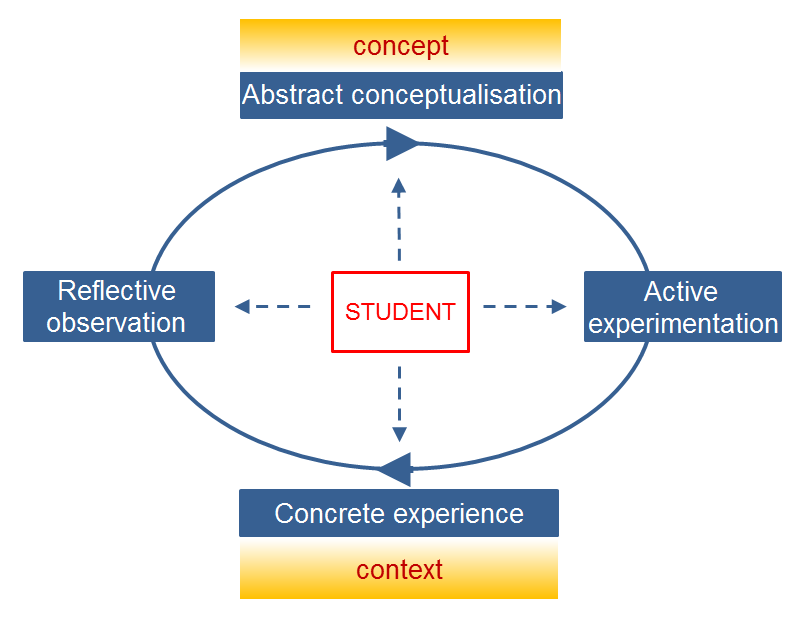2. Modelling in secondary education
2.4 How people learn
Learning takes place
when someone is continuously building connections to prior knowledge
through interactions with the world and reflective thinking
James Zull
The influential publication How People Learn1 has yielded new insights about learning that can help to develop a didactics of modelling. It is now known that deep learning is a process of physical change in the brain. In essence, it boils down to making new connections and strengthening existing connections between the synapses in the brain. The process of neurological changes in the brain that we call learning is strongly stimulated by three interventions:2,3
- Physical interaction with the subject of research (observation, demonstration, experiment) with an active role for students;
- Communication with others, for example by discussions with classmates and confrontation with other points of view. The very fact that this forces to form own ideas, orally and in written, has a strong positive effect;
- Visual imagination of elements and processes. Sketchy modelling must already take place in the first stage of conceptualisation, and visual representations must precede formal definitions.
According to these insights, learning is a cyclic process that begins with concrete experiences and primary observations that subsequently lead to a connection with prior knowledge. The next step consists of a hypothesis about this connection, followed by actions with the aim of testing this hypothesis.
Earlier in 1984, David Kolb4 had developed the idea of a learning cycle. According to Kolb, there are four recognizable phases of learning: concrete experience, reflective perception, abstract conceptualisation, and active experimentation and testing. Deep and permanent learning requires that all phases are completed (several times).

Fig 2.4 Learning cycle of Kolb
- Concrete experience: the learning can start with a concrete here-and-now experience in a particular context.
- Reflective observation: a concrete experience is followed by reflective observations related with the experience, in which a link is made with prior knowledge. Data are analysed and patterns are identified.
- Abstract conceptualisation: the conclusions from the data analysis lead to abstract understanding of the experienced situation. New notions and concepts are processed in this phase.
- Active experimentation: The gained insights may lead to questions and having a look again at the situation.
- Consolidation: the new knowledge is consolidated by coupling with other situations and experiences.
A cycle can also start in a different phase, for example a student can think about new predictions from an abstraction, and look for a suitable experiment, or encounter surprising new experiences while experimenting. Learning is a, often chaotic, going back and forth between these phases, wherein sometimes phases are skipped or the learning temporarily stops without satisfactory outcome.
These conclusions from educational research, in particular the cyclic nature of the learning process and the learning effect of the three interventions mentioned above, physical interaction, communication, and visual imagination, are an important guideline for effective (modelling) instruction.